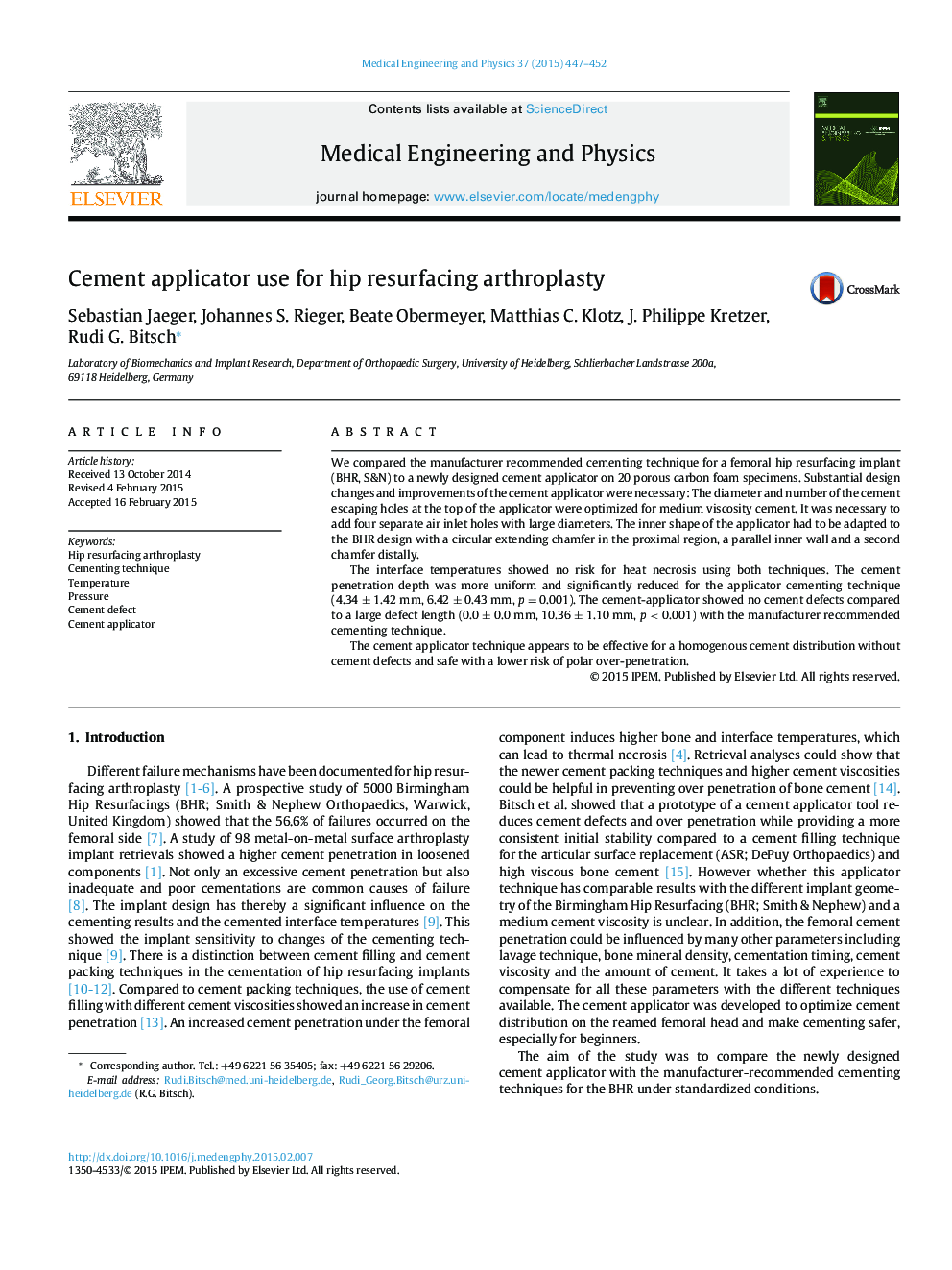| Article ID | Journal | Published Year | Pages | File Type |
|---|---|---|---|---|
| 875757 | Medical Engineering & Physics | 2015 | 6 Pages |
•An experimental study of different cementing techniques.•Comparison of a new cement applicator with the recommended technique for the BHR.•The applicator appears to be effective for a homogenous cement distribution.•The new cement applicator technique showed no cement defects or air trapping.•The cement applicator technique showed a lower risk of over-penetration.
We compared the manufacturer recommended cementing technique for a femoral hip resurfacing implant (BHR, S&N) to a newly designed cement applicator on 20 porous carbon foam specimens. Substantial design changes and improvements of the cement applicator were necessary: The diameter and number of the cement escaping holes at the top of the applicator were optimized for medium viscosity cement. It was necessary to add four separate air inlet holes with large diameters. The inner shape of the applicator had to be adapted to the BHR design with a circular extending chamfer in the proximal region, a parallel inner wall and a second chamfer distally.The interface temperatures showed no risk for heat necrosis using both techniques. The cement penetration depth was more uniform and significantly reduced for the applicator cementing technique (4.34 ± 1.42 mm, 6.42 ± 0.43 mm, p = 0.001). The cement-applicator showed no cement defects compared to a large defect length (0.0 ± 0.0 mm, 10.36 ± 1.10 mm, p < 0.001) with the manufacturer recommended cementing technique.The cement applicator technique appears to be effective for a homogenous cement distribution without cement defects and safe with a lower risk of polar over-penetration.
